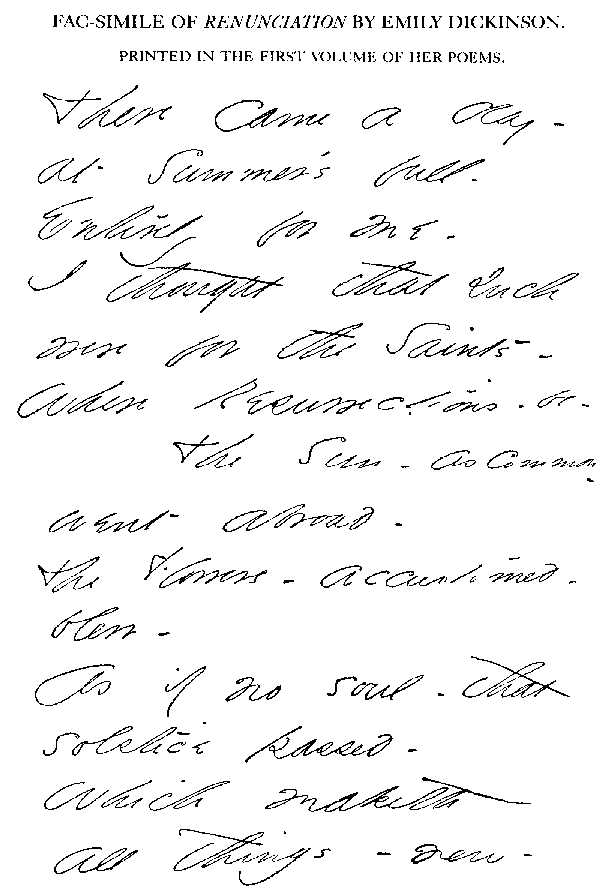|
Born on December 10, 1830, Emily Elizabeth Dickinson became a member of her prestigious family. Her hometown, Amherst,
Massachusetts, was where Emily spent almost all of her life. Her family was well-known
by the Amherst society because of their involvement with the Amherst College. Emily’s Grandfather
was the founder of the Amherst College
and greatly involved in the community. Her father, Edward Dickinson, continued the role that was set by his father. Edward
was also an attorney and served in Congress, like all the other men in the Dickinson
family. Emily’s mother on the other had, was considered a housewife. From a letter written by Emily, she stated that
her mother was never a mother to her. Her mother was often recognized as a deeply depressed woman. Emily had two siblings
as well; an older brother, Austin, and a younger sister, Lavinia. All the children in the Dickinson
household were brought up to be strict Christians and involved with the Amherst
society. Many times, her father would host gatherings for the community at their house. Eventually, their house was named
the, “Homestead,” or the, “Mansion,”
because of all of these gatherings. Emily never enjoyed having all these people at her house, so she secluded herself in her
room when she had the chance to sneak away. Emily Dickinson spent most of her adult life in her room in
her father’s house. The only time she ever lived anywhere else was when she went to school for a year at South Hadley
Female Seminary, now named Mount Holyoke
College. It was a religious school, which began to frustrate her. She
resisted her faith and had no hope for being a Christian. She wrote about all her frustrations at this school in letters of
hatred. When she returned to Amherst, she slowly stopped attending
church services. This is the time in her life when she began writing all the time while secluded in her bedroom.She didn’t have a lot of reaction with other people once she was in her room. She only would talk to people that
came to visit by opening her door slightly, just enough to hear them. She also conjured up a pulley system in order to interact
with her brother’s children when they were playing out side. Emily Dickinson spent most of her adult life in her room in
her father’s house. The only time she ever lived anywhere else was when she went to school for a year at South Hadley
Female Seminary, now named Mount Holyoke
College. It was a religious school, which began to frustrate her. She
resisted her faith and had no hope for being a Christian. She wrote about all her frustrations at this school in letters of
hatred. When she returned to Amherst, she slowly stopped attending
church services. This is the time in her life when she began writing all the time while secluded in her bedroom.She didn’t have a lot of reaction with other people once she was in her room. She only would talk to people that
came to visit by opening her door slightly, just enough to hear them. She also conjured up a pulley system in order to interact
with her brother’s children when they were playing out side.

One of the biggest historical events that impacted Emily’s writing the most was the American Civil War.
Since her family was very involved with the political society, they avoided involvement in the army. This however, didn’t
mean that they knew people who fought and died in the Civil War. Many people that Emily knew were killed. This translated
into her poetry. This was the time period where Emily produced the largest amount of poems in her life.

Emily was diagnosed with Bight’s Disease later on in her life. This disease, inflicted by degeneration of the
kidneys, took her life at age 55. Some medical doctors came to the conclusion that stress played a huge role in the reason
for her early death.
Even though Emily Dickinson died at such a young age, she still created over 1,700 poems. There were rarely any that
were discovered or even published during her life. The public became familiar with her poems when her sister, Lavinia, discovered
them after Emily’s death. Her first book of poems was published in 1893, thanks to Terrence Higginson, a long-time friend
of Emily’s.

|
